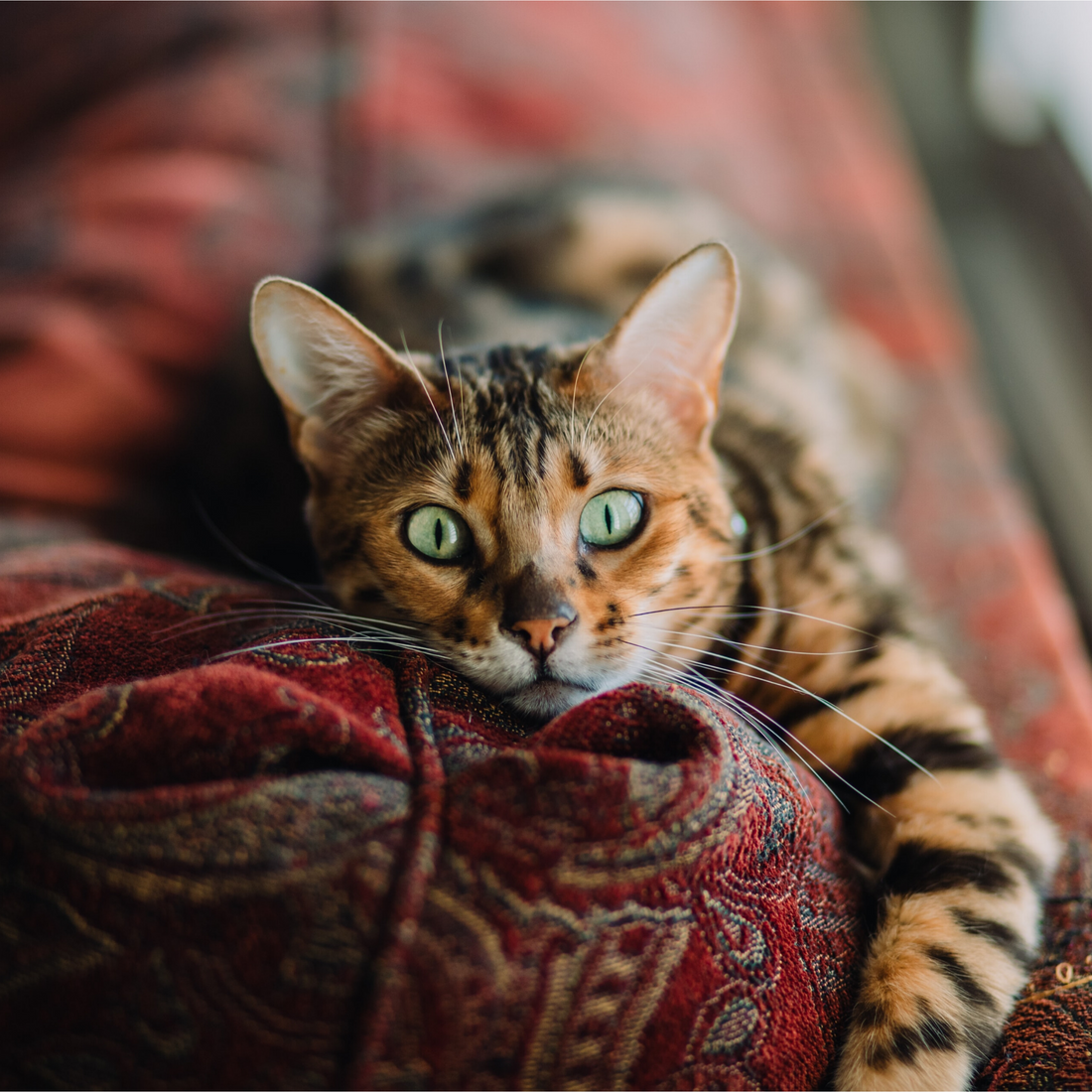
How to help your feline with skin pawblems!
Share
It is a commonly known fact to all cat parents around the world, that owning a cat is equivalent to having a small baby at home. For some, it may seem like a full-time job, given the amount of time investment and responsibilities they have to deal with to ensure proper care and attention for their felines.
Similar to humans, who may have health issues due to lack of proper care, cats too need to be taken care of when it comes to meeting their needs and demands. A lot of cat owners would have encountered a lot of problems in raising their pets, the most common ones being skin-related issues. Ranging from itches to rashes, hair-loss to boils, your cat can develop a lot of problems on their fur-covered bodies, and we as parents must understand them and act towards relieving our felines from these issues.
Here are the most common skin problems that domestic cats usually face:

1) Acne:
This is a common skin problem for us humans when excess oiliness and moisture on the skin causes inflammations and pimples on the skin. Felines too can develop acne, usually below the chin or surrounding the lips. There could be multiple reasons for this to happen, the most common ones being exposure to plastic toys, foods, water bowls or coming in contact with rough surfaces. Felines secrete oils that react with these items, causing irritation. The most common treatment for feline acne is to maintain a proper bathing schedule for cats, especially if they have sensitive skin. Also, the use of specific anti-bacterial shampoos can resolve acne for cats, providing smooth oil-free fur.

2) Food-related allergies:
Cats can be affected by the food they eat and how it can cause internal reactions resulting in rashes or patches on their skin. One of the primary reasons for this to happen is that your cat is vulnerable to certain preservatives that are present in the food they eat, causing sensitivity in certain areas of the body. The common symptoms that arise due to food allergies are itching, hair-loss in specific areas and the swelling of eyelids. In such cases, the parents need to detect this early, as the delay could cause further problems. The best way to tackle this is to let the Vet prescribe medications to fight the internal allergies, or a steroid shot (in worst-case scenarios) to eradicate the development of uneasiness on your cat’s skin.

3) Ear-mite infestations:
Because cats are extremely hairy and furry, especially near the ears, this can cause the growth of specific ear-mites, like otodectes cynotis, which is found in almost 90% of cats. These tiny parasites grow near the ears and the inner canals, giving rise to a brown waxy material that may cause itching and redness, leading to a bacterial infection near the affected areas. The most common way to detect this is if your cat continuously scratches its ears and rubs the affected area on walls or surfaces. Cat parents can adopt various methods to fight this infestation, by using special ear drops that have mite-killing chemicals when bathing their pets, accompanied by regular cleaning of the ear canal with soft cotton or cloth.
4) Feline Alopecia:
Hair loss patches are common in humans, clearly evident in the form of baldness and loss of hair on other parts of the body. Cats too can face alopecia, which is the thinning of the fur in certain areas, commonly caused due to excessive grooming and licking by the cat. There is no specific external factor responsible for this occurrence, but the most common reason for your cat to groom itself more than normal may be due to stress. Felines tend to over-groom themselves if they feel mentally vulnerable and upset. They tend to clean and lick their fur more than usual in response to the doubt and disturbance they feel emotionally or mentally. This in turn causes hair loss in specific areas, resulting in patches that are then exposed to external bacteria or fungus. Thus, it is imperative for cat parents to keep their pets happy and distracted and to make sure that their feline is never depressed or stressed.

5) Stud-tail:
Stud tails are basically the formation of red boils and damp patches near the base of the tail of the tip. This specific skin issue is commonly found in felines that are unneutered (not castrated). There is a secretion of excess oils near the base of their tails, giving rise to pus-like boils that can cause itching and irritation. Given the fact that this is an issue found near their urinal glands, not treating it in time or in the proper manner can lead to more skin problems, like the development of permanent fungal marks and constant hair-loss. Cat experts around the world usually suggest that the best way to tackle this issue is to either castrate the cat or to use special antiseborrheic shampoos to clean the production of excess skin oil near their glands.

6) Abscess:
An abscess is a phenomenon wherein there is a collection of pus-like liquid that has gathered within the internal body tissues. This can be observed on the skin of cats at places of bites and scratches usually caused due to aggressive fighting with other cats or pets, leaving marks and open wounds. This then leads to the swelling of the wound that can break or tear, secreting a pungent-smelling liquid. Felines are calm and composed animals, but they ten to get very offensive during brawls with other animals that can leave them with marks all over their body, especially near the head or the underbelly. Like other normal wounds, these can be treated by using anti-bacterial powders and creams to eliminate the formation of excess pus on their skins. But the most effective way to prevent your cat from getting into fights is to keep them indoors and groom them to calm and friendly, avoiding unnecessary banters when they step outside.
Every animal, may it be dogs or cats, or humans for that matter, is always in constant need of medical attention. And pets, given their inability to be vocal and thoughtful like humans, require extra care. Thus, pet owners must take up the responsibility of meeting the demands of their animals and making sure that their health and mental needs are met with the utmost care and love.
